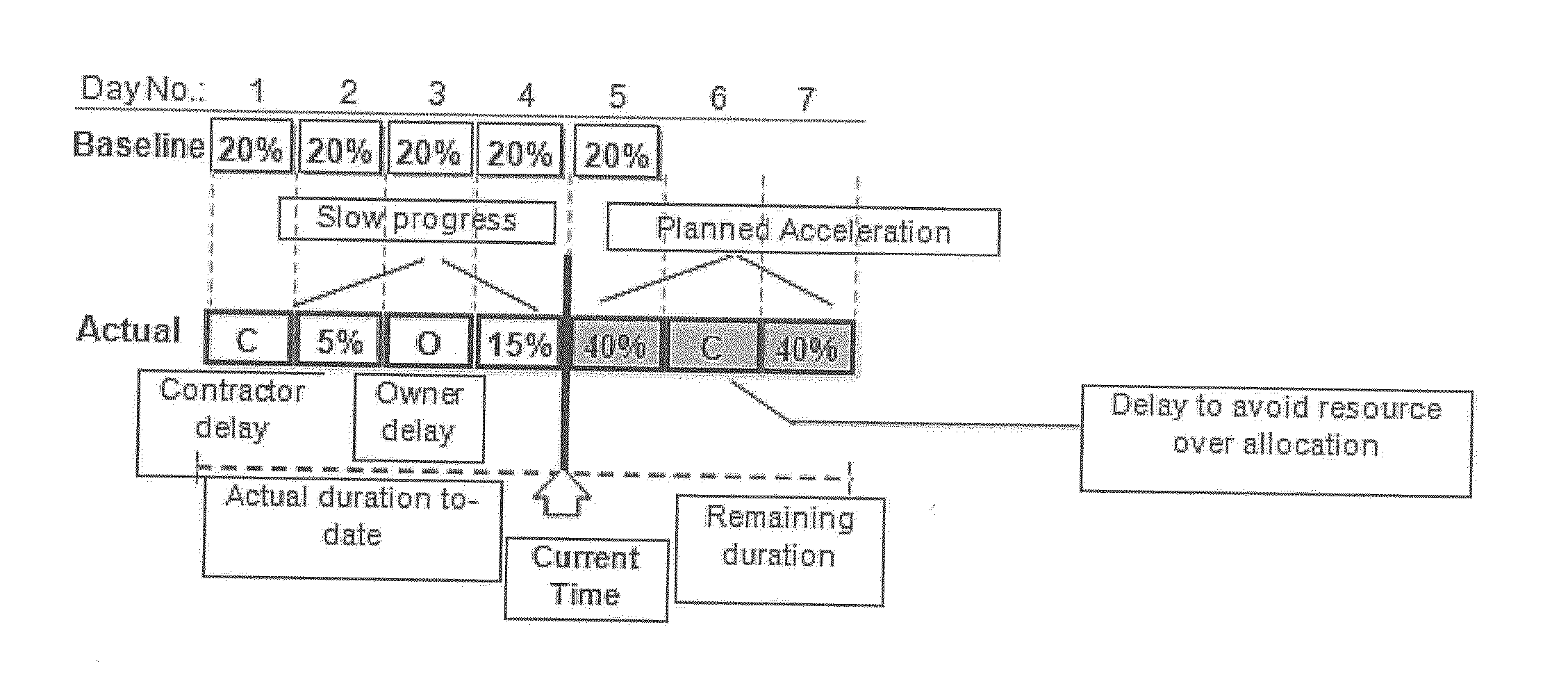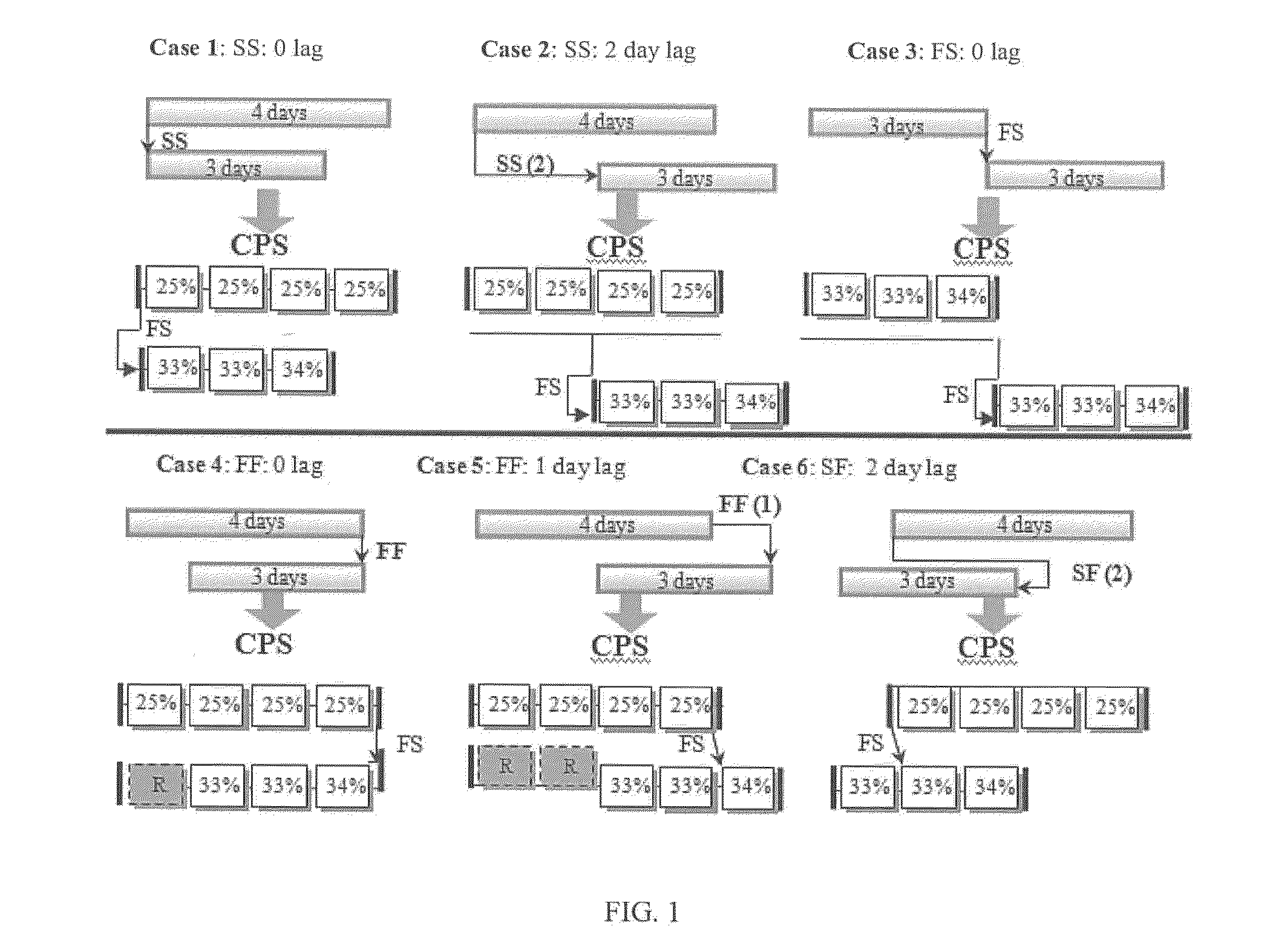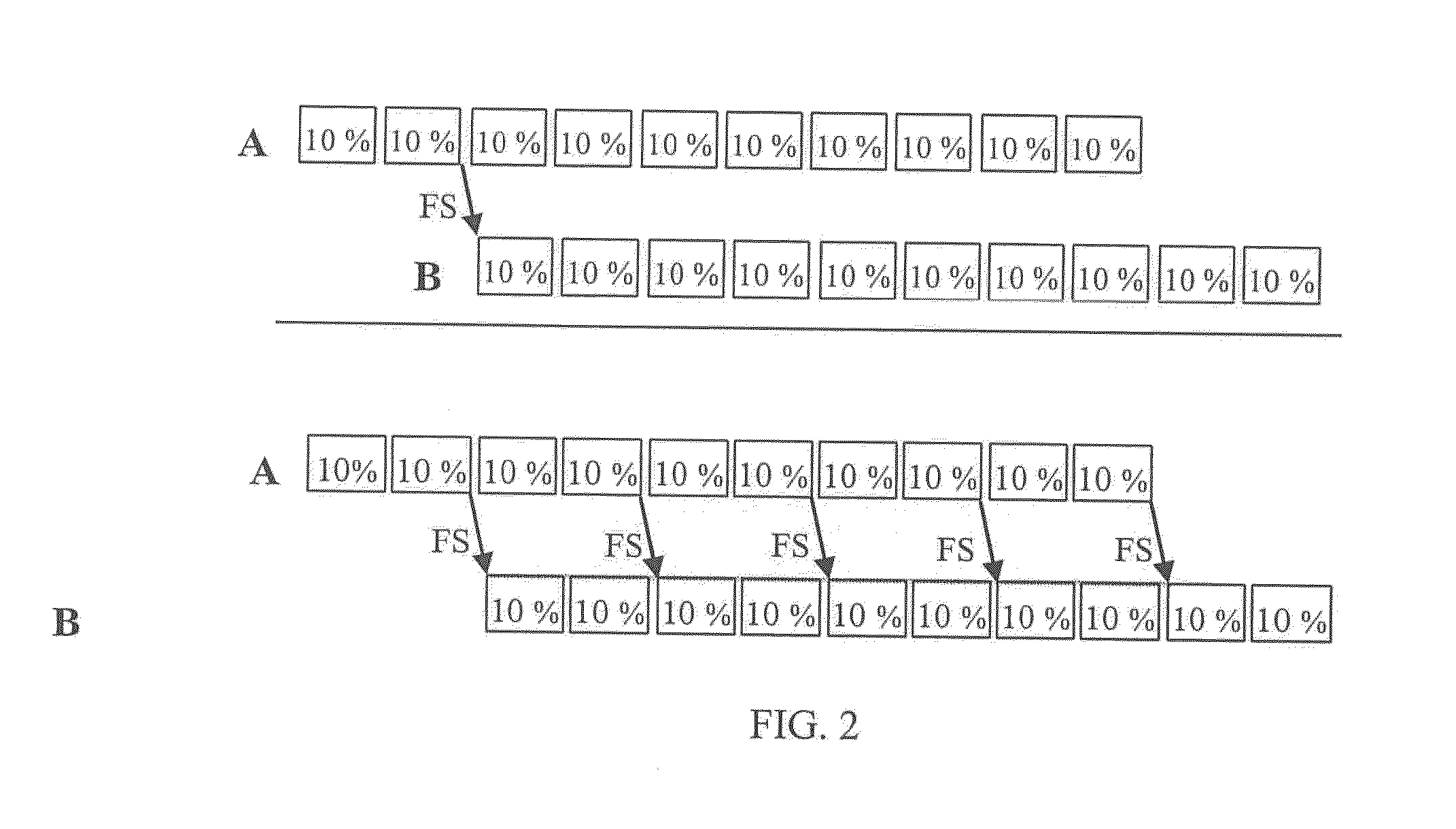Method for critical path scheduling of activity time segments
a critical path and activity time segment technology, applied in the field of computerized scheduling methods, can solve the problems of introducing errors in float calculations, complicating the scheduling process, and cpm-based scheduling remains a challenging process, and achieve the effect of meeting time, cost and resource constraints
- Summary
- Abstract
- Description
- Claims
- Application Information
AI Technical Summary
Benefits of technology
Problems solved by technology
Method used
Image
Examples
example 1
[0035]As mentioned earlier, complex relationships such as FF, SS, and SF, complicate the CPM and can lead to situations in which the activities might be partially critical. Such a situation is not detectable by available software systems mainly because of the assumption that each activity is a single undivided block of a given duration. This results in errors in the float and critical path calculations. FIG. 7 illustrates a simple case study. The figure shows a network in which each activity (e.g., piling, foundation work, steelwork and roofing) is linked by both a start-to-start (SS) and a finish-to-finish (FF) relationship. The network calculations in this case (FIG. 7(a)) reveal that the start dates are critical for all activities but, because of the overlap created by the SS and FF relationships, the finish dates for the first three activities contain float. Such a situation is complex to analyze, particularly under cases involving resource limits and / or schedule crashing, let a...
example 2
[0037]In Example 2, a small project is considered and is intended to show that CPS is more flexible in terms of resource allocation and allows detailed schedule analysis of project delays. FIG. 8a shows the as-planned schedule of a seven-activity project, with activities B, C, and D, each requiring one R1 resource (limit=2 R1 / day). The 13-day as-planned schedule of FIG. 8a, therefore, meets the resource limit.
[0038]During the course of construction, the owner caused a delay in activity B on day 3 (FIG. 8b). Although the delay did not affect the critical path, it made the initial resource allocation for the remaining work impractical on day 8 (FIG. 8b). To resolve this resource over allocation, the contractor would be forced to delay the project one day (FIG. 8c) to become 14 days. Accordingly, regular schedule analysis would indicate that the contractor may claim a one-day extension due to the resource over-allocation resulting from the owner delay.
[0039]Using the CPS approach, the ...
example 3
[0040]In Example 3, a small project involving the use of multiple calendars is used. As shown in the top part of FIG. 9 (prior art), activities A and B have a Finish-to-Start (FS) relationship with (−1) lag. Accordingly, forward pass calculation in CPM determines that the early start time (EST) of B is Day 8. However, since the FS relationship with −1 lag means that the successor can start whenever the remaining duration of the predecessor is 1 day, other options exist for the EST of activity B. Because of the difference in the calendars, the bottom part of FIG. 9 shows that activity B can start either on day 4 or day 5. As such, day 4 is the EST of activity B, not day 8, which is not detectable by CPM calculations and existing software systems. Prior art systems specify day 8 as the EST of activity (or task name) B (illustrated in FIG. 10(a) (prior art)), without taking advantage of the other possible EST times for activity B. It is noted that because existing systems display only ...
PUM
 Login to View More
Login to View More Abstract
Description
Claims
Application Information
 Login to View More
Login to View More - R&D
- Intellectual Property
- Life Sciences
- Materials
- Tech Scout
- Unparalleled Data Quality
- Higher Quality Content
- 60% Fewer Hallucinations
Browse by: Latest US Patents, China's latest patents, Technical Efficacy Thesaurus, Application Domain, Technology Topic, Popular Technical Reports.
© 2025 PatSnap. All rights reserved.Legal|Privacy policy|Modern Slavery Act Transparency Statement|Sitemap|About US| Contact US: help@patsnap.com



